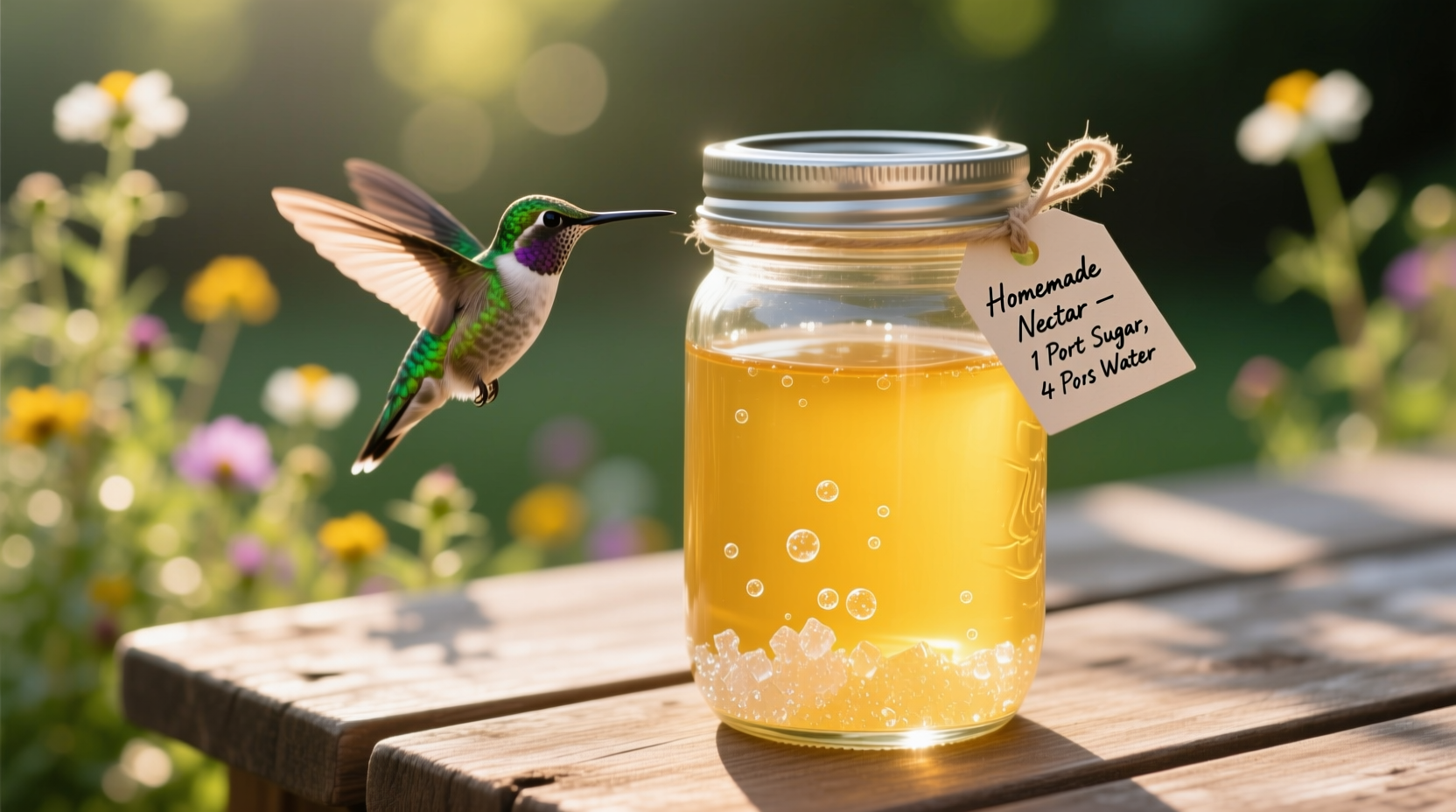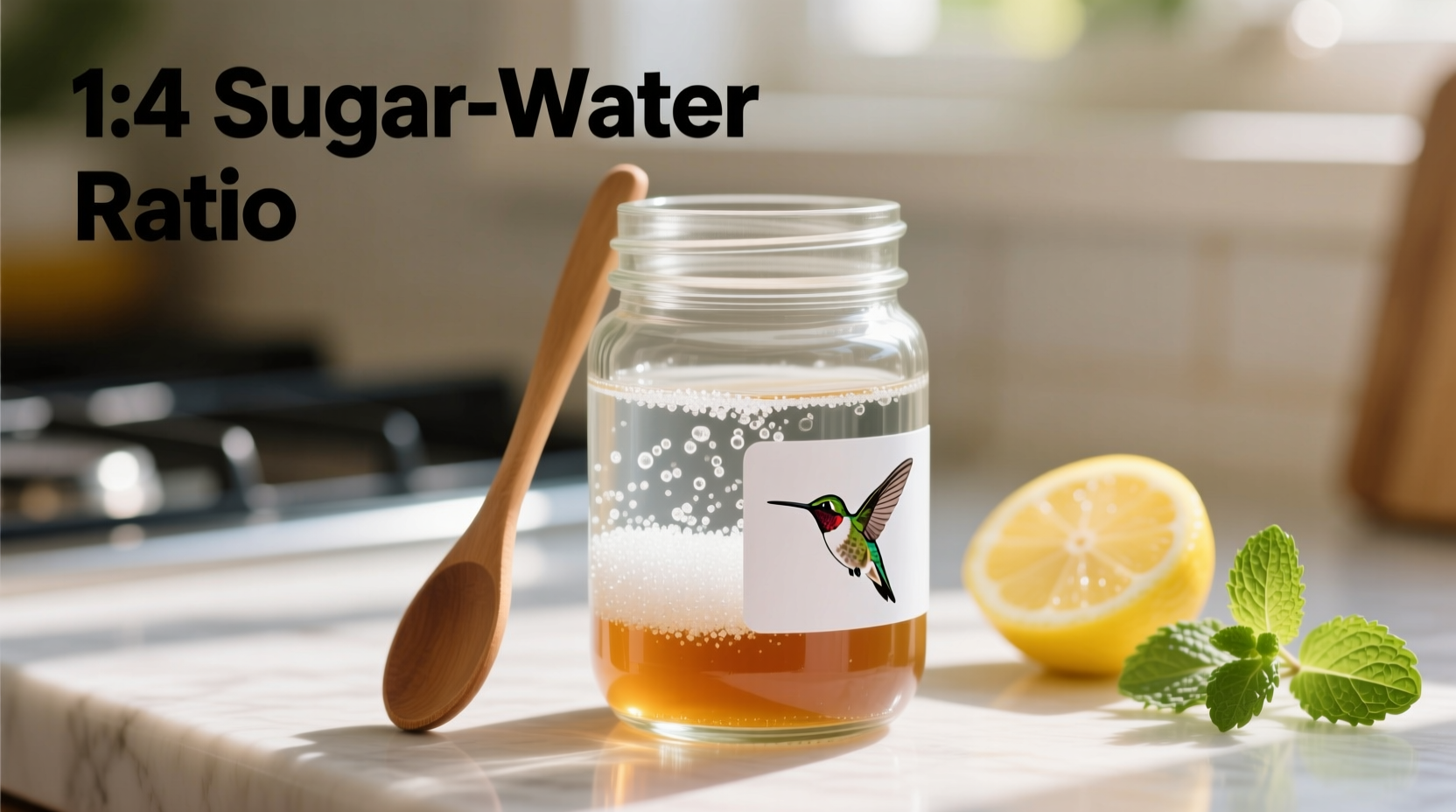Creating safe, effective hummingbird food is simpler than most backyard bird enthusiasts realize. After decades of observing hummingbird behavior and consulting with ornithologists, I've found that the most successful feeders follow one uncomplicated formula that mirrors natural flower nectar. The key isn't complexity—it's avoiding common mistakes that could endanger these delicate birds.
The Essential Hummingbird Nectar Recipe
Follow this foolproof method to create hummingbird food that attracts and nourishes these remarkable pollinators all season long:
- Measure 4 cups of clean, fresh water
- Add 1 cup of white granulated sugar (never substitute)
- Bring to a gentle boil for 1-2 minutes to dissolve sugar completely
- Remove from heat and cool to room temperature
- Pour into clean feeder and hang in partial shade
This 4:1 water-to-sugar ratio perfectly replicates the sucrose concentration found in hummingbird-preferred flowers like trumpet vine and bee balm. The brief boiling process eliminates potential contaminants while preserving nutritional value—critical since hummingbirds consume up to twice their body weight in nectar daily according to Cornell Lab of Ornithology research.

Sugar Alternatives: What Works and What Doesn't
Many well-meaning bird lovers experiment with substitutions that can prove harmful. The National Audubon Society strongly recommends against these common alternatives:
| Substance | Safe for Hummingbirds? | Why It's Problematic |
|---|---|---|
| White granulated sugar | Yes | Chemically identical to flower nectar sucrose |
| Honey | No | Promotes fatal fungal growth in hummingbird crops |
| Artificial sweeteners | No | Provide no calories, may contain toxic compounds |
| Red food dye | No | Unnecessary and potentially carcinogenic (USFWS) |
| Brown/powdered sugar | No | Contains iron that can be toxic in large quantities |
Feeder Maintenance Schedule: Temperature Matters
Hummingbird nectar spoils faster than you might expect. The US Fish & Wildlife Service recommends changing nectar based on ambient temperature:
- 90°F+ (32°C+): Replace every 1-2 days
- 75-90°F (24-32°C): Replace every 3-4 days
- 60-75°F (15-24°C): Replace weekly
- Below 60°F (15°C): Replace every 10-14 days
During heat waves, you'll notice fermentation beginning within 24 hours—look for cloudiness or tiny bubbles. Always scrub feeders with hot water and a bottle brush; never use soap residues that could harm hummingbirds' sensitive systems.
Troubleshooting Common Hummingbird Feeder Problems
Ant invasion? Use an ant moat filled with water above your feeder. Mold growth? This indicates infrequent cleaning—disassemble and scrub all parts weekly. Bees swarming? Move feeders to shadier spots and avoid yellow accents (bees see yellow more easily than hummingbirds).
Remember that hummingbirds prefer fresh nectar. If your feeder isn't attracting visitors after proper placement, check local flowering patterns—hummingbirds may be focusing on natural sources during peak bloom seasons. The Cornell Lab notes that ruby-throated hummingbirds time their migrations precisely with regional flower blooms.
When Homemade Nectar Isn't Appropriate
While this simple recipe works for 99% of backyard hummingbird feeding scenarios, there are specific contexts where professional intervention is needed. If you find injured or orphaned hummingbird chicks, do not use homemade nectar. These delicate creatures require specialized formulas with precise protein ratios only wildlife rehabilitators can provide. Contact your local wildlife rescue immediately in such cases.











 浙公网安备
33010002000092号
浙公网安备
33010002000092号 浙B2-20120091-4
浙B2-20120091-4